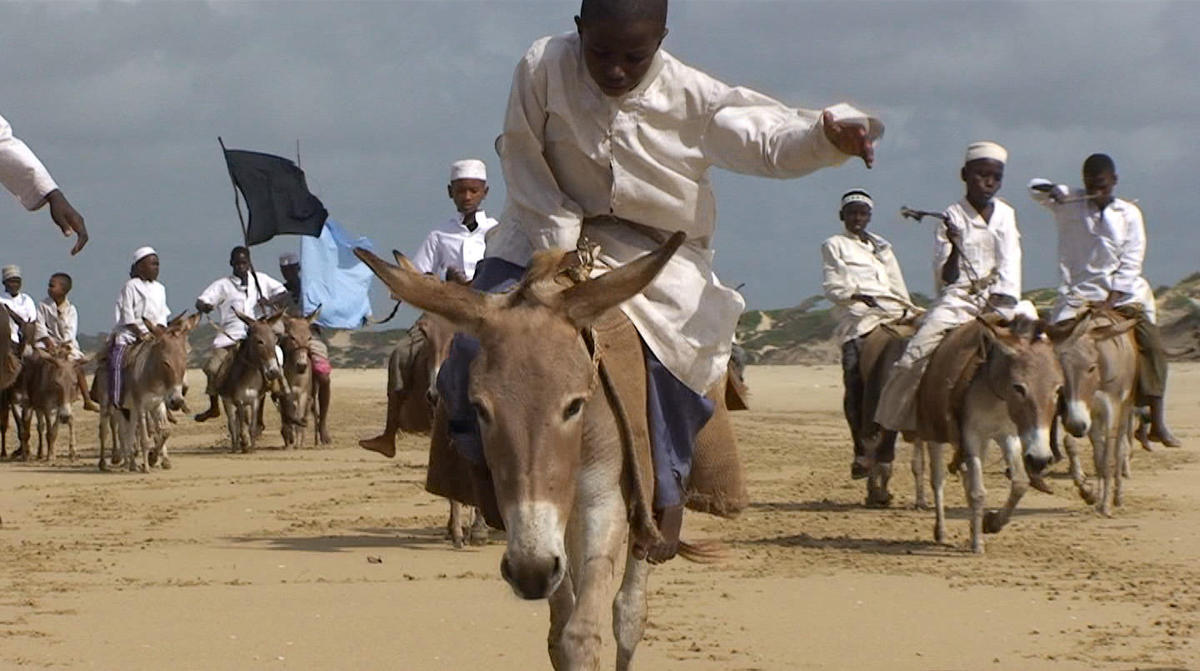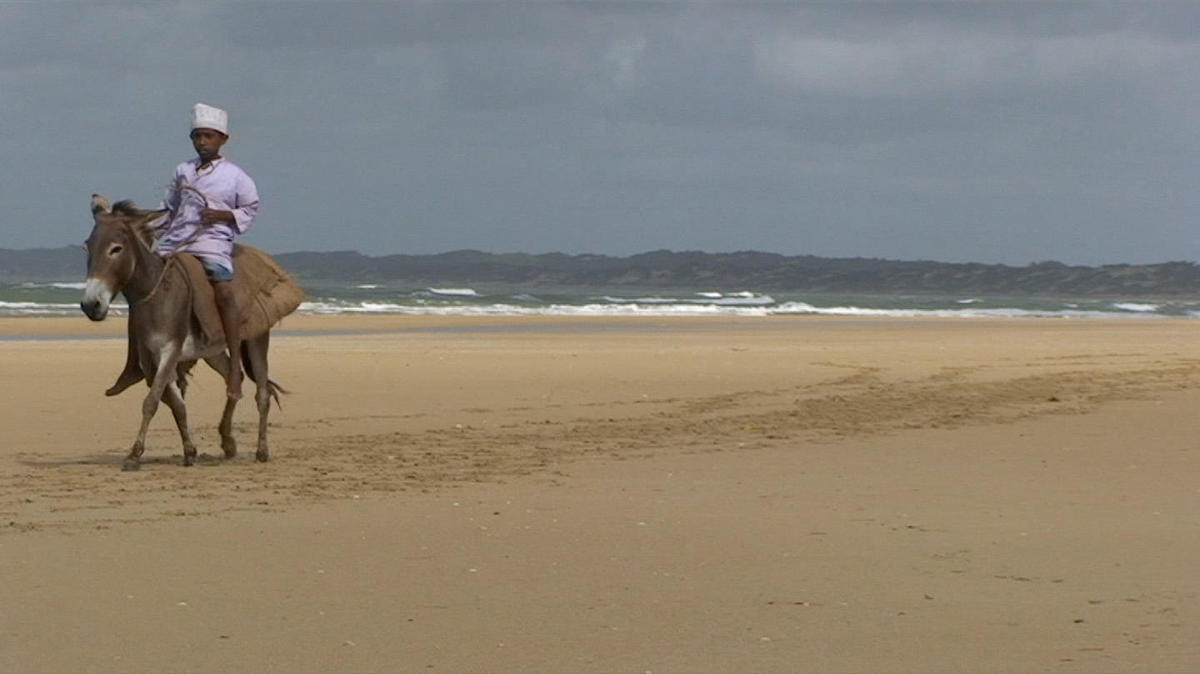
Amman
Wael Shawky: Larvae Channel
Darat al Funun
October 6, 2009–January 5, 2010
Wael Shawky’s latest series of videos, the second installment of which debuted during his solo exhibition at Darat al Funun this winter, was the most documentary-style work he’s produced to date. While earlier efforts employed a gestural and impressionistic approach to the medium, and relied heavily on intentional artifice, staged or repeated performances, and historical reenactments, the new pieces are far more direct and responsive to contemporary situations and contexts. That said, they do bear certain similarities to the artist’s previous work.
Just as Shawky’s previous series, Telematch, took a singular setup — the structure of a German television game show from the 1970s — and explored it at length and in several different permutations, his new series, Larvae Channel, riffs on the idea of the roving television reporter connecting with common folk on the proverbial street in workaday cities, interviewing them about their lives and, more often than not, fielding their gripes and complaints. Because Shawky’s hoi polloi mistake him for a journalist rather than an artist, they bitch and moan to him, bellyaching about their circumstances, venting their frustrations, and speaking of their hardships and injustices, as if their voices will be heard, as if through some magic of the media their messages will be delivered to, and acted upon by, unseen people in power.
Larvae Channel 2, from 2009, resulted from a month-long residency in Amman last year (the ten-minute video was exhibited there first, then immediately after presented at Frieze and Paris Photo). During his time in Jordan, Shawky visited several Palestinian refugee camps. After conducting rounds and rounds of interviews with residents, he began picking up recognizable patterns. People talked to him in clichés. They recycled the same stories. They fed back to him the reductive images and simplified scripts of tragically shallow accounts in mainstream newspapers and on the nightly news.

To shift the emphasis of the footage he collected from such encounters, Shawky turned one particular interview with an elderly couple into a rotoscope animation, which was surprisingly effective in amplifying the body language of his interlocutors while pushing their spoken dialogue into the realm of background noise. The scratchy traces of the rotoscope also functioned metaphorically for history repeating itself, with the camps as a palimpsest, registering the same narratives of grief, dispossession, and despair over and over again.
In Amman, Larvae Channel 2 was shown alongside another new work, the most recent addition to the Telematch series. Telematch Crusades, also from 2009, featured a group of children — casting kids is by now one of Shawky’s signature tropes — seen riding donkeys single file along a dramatic stretch of beach on the island of Lamu, off the coast of Kenya. Amid the fluttering of crusader flags, the boys looped and surrounded an old crusader fort.
As the work was presented at Darat al Funun (in a long, acoustically challenged room opposite a projection of Telematch Sadat, from 2007, in which another pack of kids reenacted the assassination, funeral procession, and burial of the Egyptian president Anwar Sadat, who was killed in 1981), Telematch Crusades was divided into sections, with the action on the beach broken up by an animation, totally fictional, of Pope Cornelius calling on Christians to wage a war against Islam. (Pope Cornelius predated the Crusades by about eight hundred years.) By the time the same piece was installed at the Alexandria Biennale, where it won top honors in December, Shawky had cut out the animation completely, which made the piece more elegant and the pace and material that remained more beautiful, coherent, and concise.
It remains to be seen whether animation really works in Shawky’s practice, which he often describes as a process of translation across cultural or civilizational lines; an attempt to pry open and consider the changes wrought by lurching interludes of modernization in Egypt since the 1970s; and an exploration of political schisms that cause momentous tears in the fabrics of several societies, all at once or over interminably long periods of time.
The most compelling evidence that animation is, in Shawky’s hands, an appropriate tool for such themes was Al-Aqsa Park, from 2006, which was also included in the Amman show. The ten-minute video showed a computerized black and white rendering of the Dome of the Rock doubling as a carnival ride that lifted, tilted, and whirled at perilous angles, an intensely contested religious icon transformed into sheer spectacle.
In Al-Aqsa Park, the animation is no more than a formal technique that allows the artist to achieve a desired image, and it is that image that conveys meaning. In Larvae Channel 2, the animation is a formal technique saddled with the additional burden of generating meaning, too, and it doesn’t quite do it. Nor does it take the work far enough away from the appearance of yet another misery tour of the camps, fodder for hundreds if not thousands of existing documentaries and films. The translation so central to Shawky’s work — if it is indeed translation at all, and not something closer to amalgamation or interpolation — seemed, here, to miss its mark. Either that, or documentary simply isn’t Shawky’s strong suit.